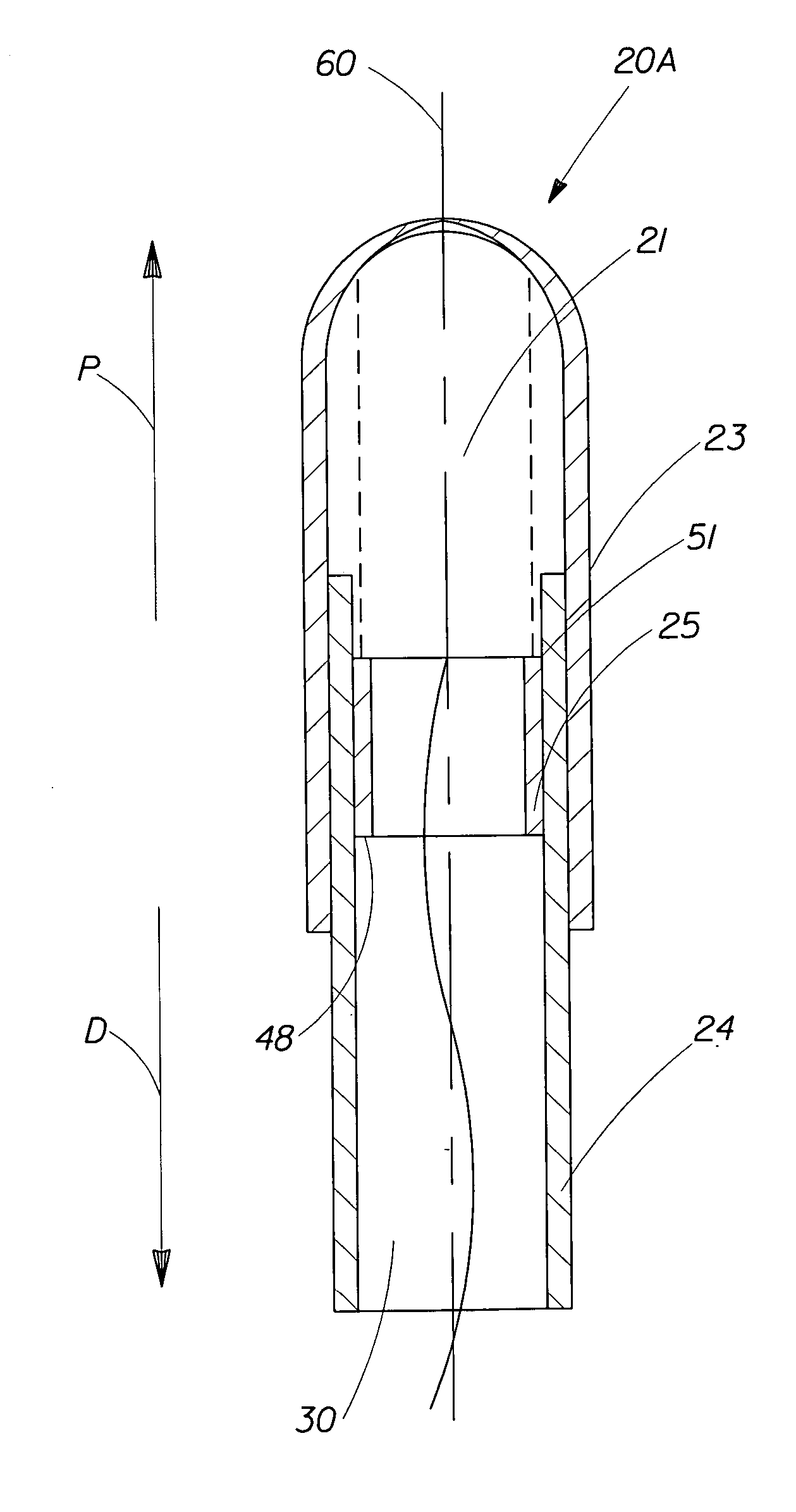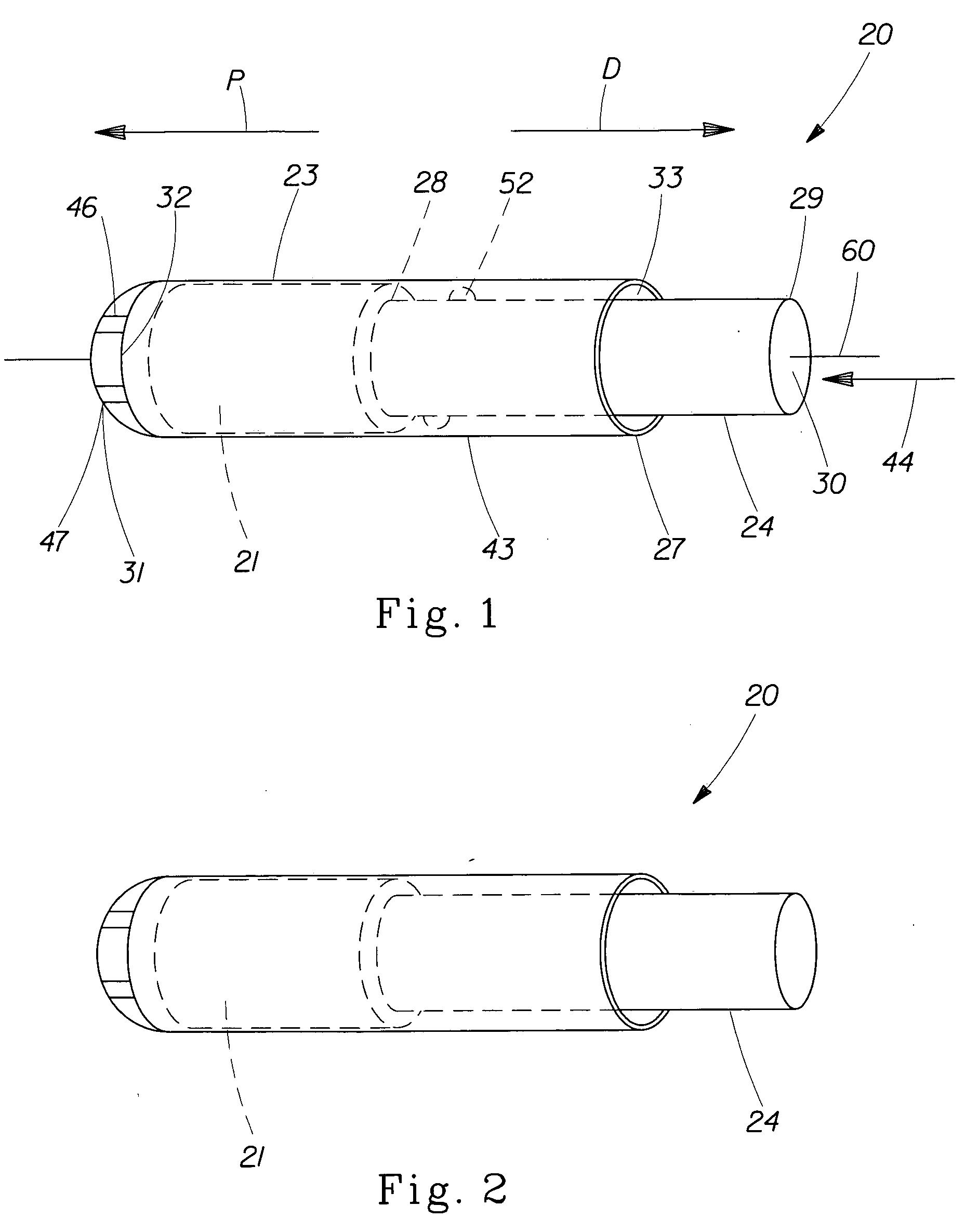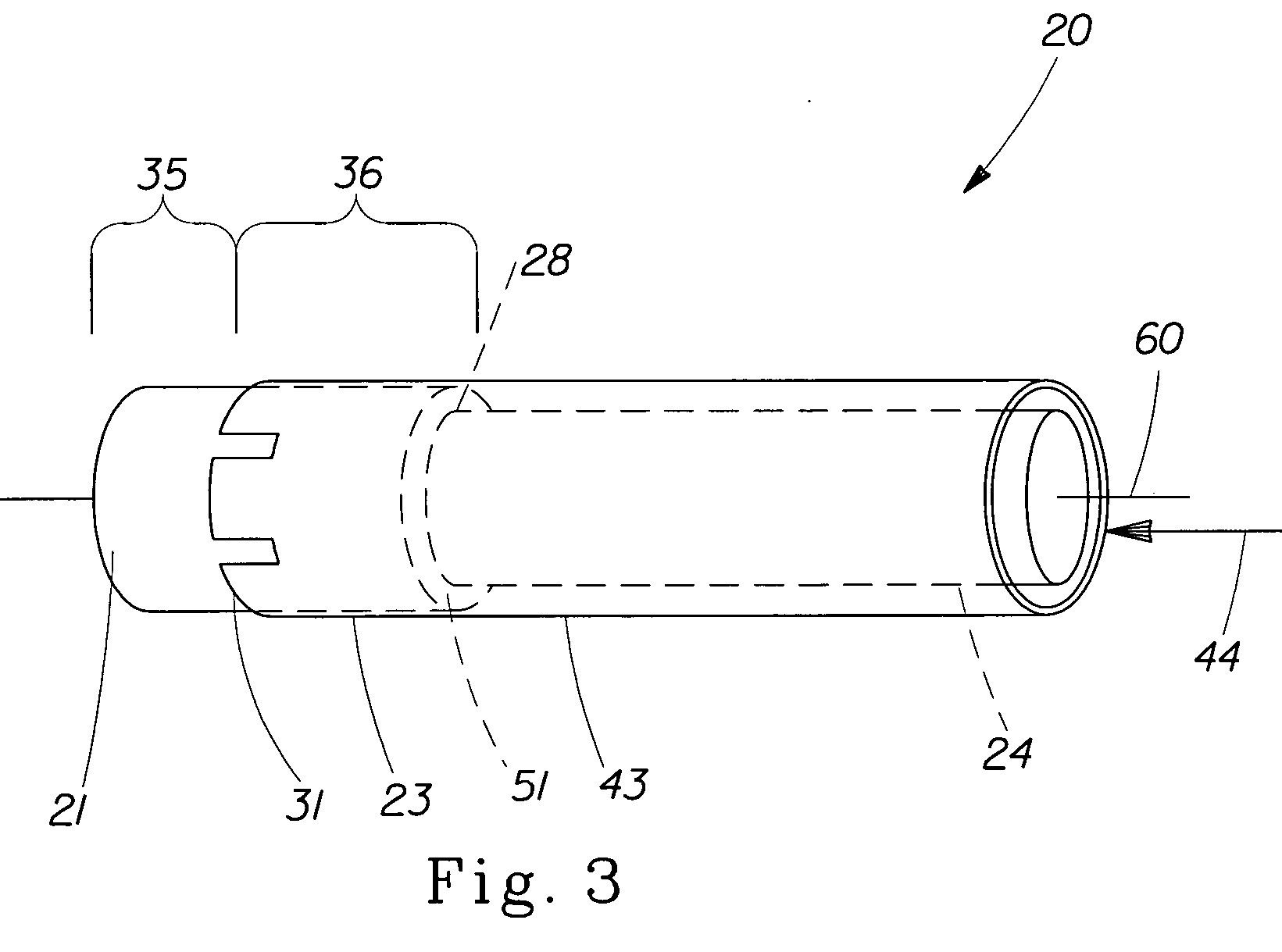Pessary applicator providing low placement
a technology of pessary and applicator, applied in the field of pessary applicators, can solve the problems of stress incontinence, inconvenient wearing of pads or diapers, and widespread problem of urinary incontinence,
- Summary
- Abstract
- Description
- Claims
- Application Information
AI Technical Summary
Benefits of technology
Problems solved by technology
Method used
Image
Examples
Embodiment Construction
[0027] Section A will provide terms which will assist the reader in best understanding the features of the invention but not to introduce limitations in the terms inconsistent with the context in which they are used in this specification. These definitions are not intended to be limiting. Section B will discuss the pessary applicator of the present invention. Section C will discuss the Force Test Method. Section D will discuss the Length Test Method.
A. Terms
[0028] As used herein, the term “pessary” refers to any type of non absorbent vaginal insert for the purpose of reducing urine leakage. Such pessaries may be have any variety of shapes and sizes including cylinders, ovate, spherical, tubular, annual rings, “U” shaped, cup shaped, rings, cubes or donut shaped. They function by direct application of support, level force, expansion of the device by selection of material or by inflation of the device.
[0029] As used herein, the terms “vaginal cavity” and “within the vagina” refer ...
PUM
 Login to View More
Login to View More Abstract
Description
Claims
Application Information
 Login to View More
Login to View More - R&D
- Intellectual Property
- Life Sciences
- Materials
- Tech Scout
- Unparalleled Data Quality
- Higher Quality Content
- 60% Fewer Hallucinations
Browse by: Latest US Patents, China's latest patents, Technical Efficacy Thesaurus, Application Domain, Technology Topic, Popular Technical Reports.
© 2025 PatSnap. All rights reserved.Legal|Privacy policy|Modern Slavery Act Transparency Statement|Sitemap|About US| Contact US: help@patsnap.com



